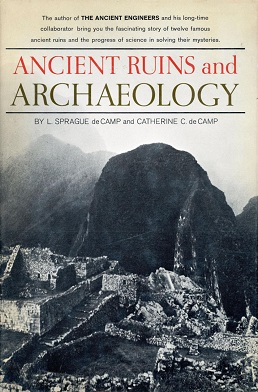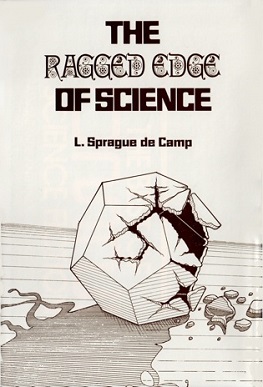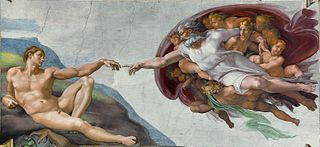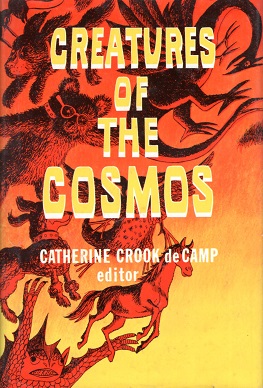The Scopes trial, formally The State of Tennessee v. John Thomas Scopes, and commonly referred to as the Scopes Monkey Trial, was an American legal case from July 10 to July 21, 1925, in which a high school teacher, John T. Scopes, was accused of violating Tennessee's Butler Act, which had made it illegal for teachers to teach human evolution in any state-funded school. The trial was deliberately staged in order to attract publicity to the small town of Dayton, Tennessee, where it was held. Scopes was unsure whether he had ever actually taught evolution, but he incriminated himself deliberately so the case could have a defendant.

On the Origin of Species is a work of scientific literature by Charles Darwin that is considered to be the foundation of evolutionary biology; it was published on 24 November 1859. Darwin's book introduced the scientific theory that populations evolve over the course of generations through a process of natural selection. The book presented a body of evidence that the diversity of life arose by common descent through a branching pattern of evolution. Darwin included evidence that he had collected on the Beagle expedition in the 1830s and his subsequent findings from research, correspondence, and experimentation.
The Butler Act was a 1925 Tennessee law prohibiting public school teachers from denying the book of Genesis account of mankind's origin. The law also prevented the teaching of the evolution of man from what it referred to as lower orders of animals in place of the Biblical account. The law was introduced by Tennessee House of Representatives member John Washington Butler, from whom the law got its name. It was enacted as Tennessee Code Annotated Title 49 (Education) Section 1922, having been signed into law by Tennessee governor Austin Peay.

Lyon Sprague de Camp was an American author of science fiction, fantasy and non-fiction literature. In a career spanning 60 years, he wrote over 100 books, including novels and works of non-fiction, including biographies of other fantasy authors. He was a major figure in science fiction in the 1930s and 1940s.
Lemuria, or Limuria, was a continent proposed in 1864 by zoologist Philip Sclater, theorized to have sunk beneath the Indian Ocean, later appropriated by occultists in supposed accounts of human origins. The theory was discredited with the discovery of plate tectonics and continental drift in the 20th century.

The Science of Discworld III: Darwin's Watch (2005) is a book set on the Discworld, by Terry Pratchett, Ian Stewart and Jack Cohen. It is the sequel to The Science of Discworld and The Science of Discworld II: The Globe.

The Great Monkey Trial is a book on the Scopes Trial by L. Sprague de Camp, first published in hardcover by Doubleday in 1968. The book is a non-fiction account of the trial, as well as its social and political context and impact. This history of the trial was based on the archives of the A.C.L.U., assorted newspaper files, correspondence and interviews with over a dozen of those present at the trial, books and magazine articles written on the trial, and a couple of visits to Dayton. The book also contains several political cartoons published at the time of the trial. Several critics have referred to the book as the definitive or comprehensive account of the Scopes Trial.

The Dragon of the Ishtar Gate is a historical novel by American writer L. Sprague de Camp, first published in hardcover by Doubleday in 1961, and in paperback by Lancer Books in 1968. The first trade paperback edition was issued by The Donning Company in 1982. The book was reissued with a new introduction by Harry Turtledove as a trade paperback and ebook by Phoenix Pick in September 2013. It is the third of de Camp's historical novels in order of writing, and earliest chronologically. It is set in 466-465 BCE, the last years of the reign of King Xerxes I of Persia.

Elephant is a science book by L. Sprague de Camp, published by Pyramid Books in July 1964 as part of The Worlds of Science series. The cover title is Elephant: The Fascinating Life Cycle of the World's Largest Land Animal.

Man and Power: the Story of Power from the Pyramids to the Atomic Age is a science book for children by L. Sprague de Camp, illustrated with documents, photographs by Russ Kinne, Roman Vishniac, and others, and paintings by Alton S. Tobey, first published in hardcover by Golden Press in 1961.

The Day of the Dinosaur is a science book by L. Sprague de Camp and Catherine Crook de Camp, illustrated with plates. It was first published in hardcover by Doubleday in 1968, and in paperback by Curtis Books in 1970 or 1971. A second hardcover edition was issued by Bonanza Books in 1985. The first chapter was reprinted as "One Day in the Cretaceous" in the de Camps's collection Footprints on Sand.

Ancient Ruins and Archaeology is a 1964 science book by L. Sprague de Camp and Catherine Crook de Camp, one of their most popular works. It was first published in hardcover by Doubleday in 1964, and reprinted under the same title by Barnes & Noble Books in 1992. The first British and paperback edition was issued by Fontana in 1972 under the title Citadels of Mystery, which was the de Camps' original working title; this title was retained by the first American paperback edition, issued by Ballantine Books in April 1973 and reprinted in February 1974. Translations into French, German and Portuguese have also appeared. Portions of the work had previously appeared as articles in the magazines Astounding Science Fiction, Fate, Frontiers, Natural History Magazine, Other Worlds Science Stories, Science Fiction Quarterly, and Travel.

The Story of Science in America is a 1967 science book by L. Sprague de Camp and Catherine Crook de Camp, illustrated by Leonard Everett Fisher, published by Charles Scribner's Sons. It has been translated into Spanish, Portuguese, Burmese and French.

The Ragged Edge of Science is a science book by L. Sprague de Camp, illustrated by Don Simpson. It was first published by Owlswick Press in 1980.

Lost Continents: The Atlantis Theme in History, Science, and Literature is a study by L. Sprague de Camp that provides a detailed examination of theories and speculations on Atlantis and other lost lands, including the scientific arguments against their existence. It is one of his most popular works. It was written in 1948 and first published serially in the magazine Other Worlds Science Fiction in 1952–1953; portions also appeared as articles in Astounding Science Fiction, Galaxy Science Fiction, Natural History Magazine, and the Toronto Star. It was first published in book form by Gnome Press in 1954; an updated edition was published by Dover Publications in 1970. De Camp revised the work both for its first book publication and for the updated edition.

The Best of L. Sprague de Camp is a collection of writings by American science fiction and fantasy author L. Sprague de Camp, first published in hardback by Nelson Doubleday in February 1978 and in paperback by Ballantine Books in May of the same year as a volume in its Classic Library of Science Fiction. The book was reprinted by Ballantine in May 1986. It was reissued in trade paperback and ebook editions by Phoenix Pick in December 2014. It has also been translated into German.

The Great Fetish is a science fiction novel by American writer L. Sprague de Camp. It was first published in Isaac Asimov's Science Fiction Magazine in two parts, as "Heretic in a Balloon" and "The Witches of Manhattan", in the issues for winter, 1977, and January/February, 1978, respectively. It was subsequently published in book form in hardcover by Doubleday in 1978 and in paperback by Pocket Books in 1980. An E-book edition was published by Gollancz's SF Gateway imprint on September 29, 2011 as part of a general release of de Camp's works in electronic form. It has also been translated into German.

Rejection of evolution by religious groups, sometimes called creation–evolution controversy, has a long history. In response to theories developed by scientists, some religious individuals and organizations question the legitimacy of scientific ideas that contradicted the young earth pseudoscientific interpretation of the creation account in Genesis.

"Judgment Day" is an apocalyptic science fiction story by American writer L. Sprague de Camp. It was first published in the magazine Astounding Science Fiction for August, 1955, and first appeared in book form in the anthology The Best Science Fiction Stories and Novels: 1956. It later appeared in the de Camp collections A Gun for Dinosaur and Other Imaginative Tales, and The Best of L. Sprague de Camp, as well as the anthologies Great Science-Fiction, A Science Fiction Argosy, and Masters of Darkness III. The story has also been translated into German.

Creatures of the Cosmos is an anthology of fantasy and science fiction short stories for younger readers, edited by Catherine Crook de Camp. It was first published in hardcover by Westminster Press in 1977. It was the third such anthology assembled by de Camp, following the earlier 3000 Years of Fantasy and Science Fiction (1972) and Tales Beyond Time (1973), both of which she edited together with her husband L. Sprague de Camp.
















